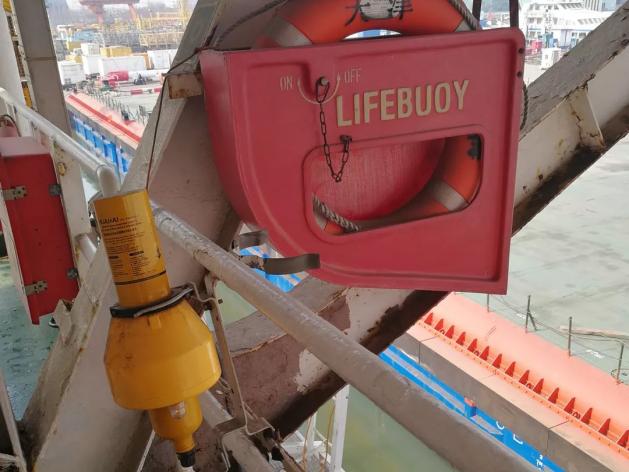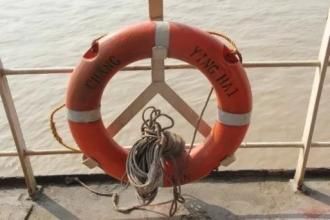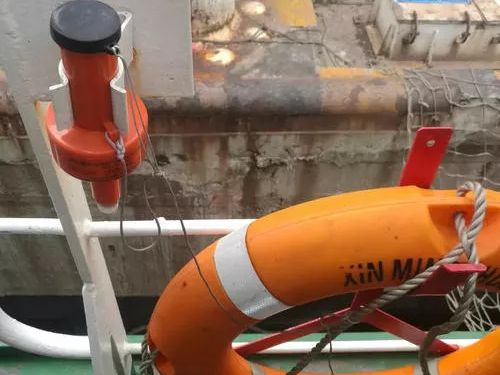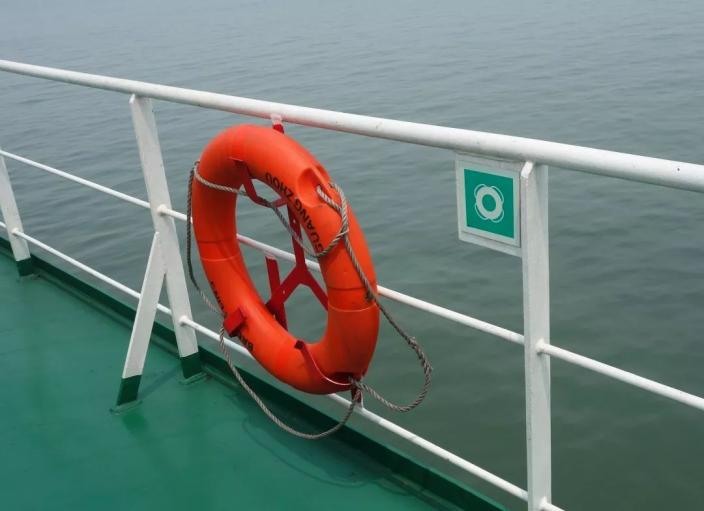Classification of Lifebuoy
Classification of Lifebuoy
Lifebuoy is one of the important personal life-saving equipment on ship. It is mainly used to provide rapid rescue when people fall into the water. Lifebuoy can quickly determine the location of people overboard, improve the success rate of search and rescue. In addition, the lifebuoy can also be used as a personal life-saving device in the process of ship distress survival.
Common lifebuoy on board can be divided into lifebuoy with a combination of spontaneous smoke signal and self-lighting, lifebuoy with a floating lifeline, life buoy with self-lighting and ordinary life buoy:
1.Life buoy with a combination of self-activating smoke signal and self-lighting
It is usually arranged on the two wings of the bridge. It is mainly used to quickly release the lifebuoy when people fall into the water during the voyage of the ship. It can indicate the position of the people falling into the water, so that the lifeboat (aid) can be launched for rapid search and rescue after the ship slows down.
SOLAS III requires at least 2 life buoy with self-lighting and spontaneous smoke signal to be quickly ejected from the cab.
Chapter II of the LSA Rules stipulates that if the life buoy is equipped with a spontaneous smoke signal and a self-lighting device for rapid casting, it shall have a mass of not less than 4kg.

2. Lifebuoy with a floating lifeline
It is mainly used to rescue people overboard during ship berthing. Throw the lifebuoy with a floating lifeline to the person who falls into the water, which can pull the person to the convenient place for rescue.
The floating lifeline under SOLAS Chapter III shall be not knotted. It diameter is not less than 8 mm. Its breaking strength is not less than 5kN.

3. Lifebuoy with self-lighting
It is mainly used to rescue people falling into the water at night. Throw a life buoy with a self-lit light to the person falling into the water, so that the person can grasp the lifebuoy and indicate the general position of the person.
SOLAS Chapter III stipulates that self-lighting shall not be extinguished by water. The self-light should be white and can be used in all directions of the upward hemisphere. And not less than 50 flashes per minute and not more than 70 flashes (flash), its luminous intensity is not less than 2cd.

Distributed throughout the ship as a supplement to other lifebuoy.
Each lifebuoy shall:
1) With an outer diameter of not more than 800mm and an inner diameter of not less than 400mm.
2) Made of naturally buoyant materials. Its buoyancy shall not depend on rush, cork planks or cork pellets, any other loose granular material or on any aerated air chamber.
3) Can support not less than 14.5kg of iron in fresh water for 24 hours.
4) Having a mass of not less than 2.5kg.
5) Will not burn or continue to melt after being completely surrounded by fire for 2s.
6) The lifebuoy or its accessories shall be constructed to withstand a drop from the storage location to the height of the lightest sailing waterline or at 30m (whichever is greater) without damage.


 Tel:+86-23-67956606
Tel:+86-23-67956606 Email:
Email:
